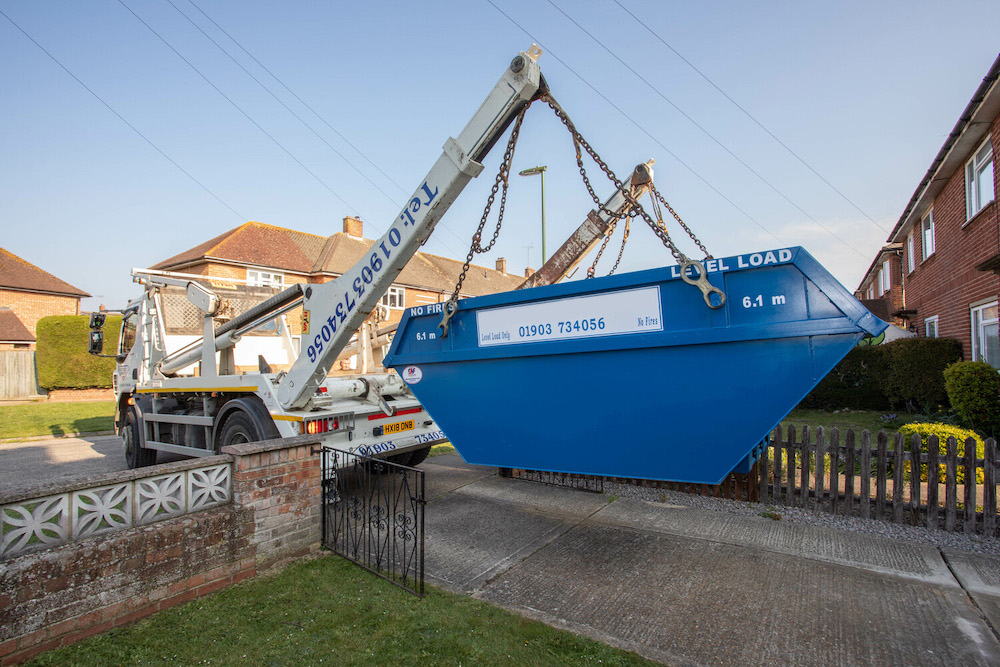Why Can’t I Put Plasterboard in a Skip?
The rules and regulations surrounding plasterboard and how it is disposed of can be confusing. A question that tends to be asked by a lot of people is whether they can put plasterboard in a skip along with other household waste. In this article, we will go through the rules regarding the disposal of plasterboard, why it can be a hazard, and how to get rid of plasterboard safely.
Can you put plasterboard in a skip?
In short, no. Plasterboard was previously allowed to be put in skips, but this changed in 2009 when the rules regarding the disposal of plasterboard waste changed. Previously, plasterboard could form up to 10% of construction waste brought to landfill sites, but the Environment Agency changed this so that it can no longer be brought to landfill with general waste. This was because, after the publishing of various scientific research, it was made apparent that there were some risks associated with disposing of plasterboard alongside other waste materials.

Why is plasterboard hazardous waste?
Plasterboard poses a risk to the environment when it is mixed with other materials, or left to get wet. This is because plasterboard is made up of, amongst other things, a mineral called gypsum sandwiched in between two layers of lining paper. Gypsum contains sulphates, which means that when it gets wet or is buried with other waste materials, it releases hydrogen sulphide gases into the environment. This process is called putrefaction. These odorous gases are flammable and poisonous, and are heavier than air which results in large pools forming in the environment. This inevitably poses a risk to human health when it occurs around waste disposal sites or skips outside of homes.
What is plasterboard made of? Is it dangerous?
Gypsum, also known as drywall, is a soft mineral made from calcium sulphate dihydrate. It is the key component in plasterboard, which is often used in construction work when building walls and ceilings. It is in fact used in construction due to its fire-protective, non-combustible properties – it can delay the spread of a fire by up to 4 hours. The only reason it causes environmental risks is due to its release of gases, which is due to improper disposal. When correctly disposed of, gypsum is perfectly safe to handle and can be used for several applications aside from plasterboard, such as cement, plaster of Paris, and soil conditioning.
Is plasterboard recyclable?
More and more people in recent years are becoming aware of their impact on the environment, and recycling is one of the ways we can reduce this. Despite the fact that plasterboard can be recycled, it is often sent to landfill – lots of people don’t realise that it can be repurposed. It is possible, however, to recover the gypsum from plasterboard and use it for a range of purposes just the same as virgin gypsum. It can be used for industrial machinery, or used to produce new plasterboard. Your local council should be able to inform you of closeby options for gypsum recycling. Not only does recycling importantly reduce the amount of waste going to landfill, it also produces a product that’s just as useful as the original, and reduces the need for gypsum extraction that is required to supply the industry.
How should you dispose of plasterboard?
First of all, plasterboard must be segregated from other materials before being disposed of. For individuals disposing of plasterboard, it should be taken to your local waste management site which should offer a plasterboard recycling or disposal service – you may want to check this with them beforehand.
For businesses disposing of gypsum-based plasterboard, try and find a local plasterboard recycling centre – not only is this the best choice for the planet, it also reflects well on you as a business who is trying to make an effort to reduce its environmental impact. Your business may also benefit from reduced landfill tax liabilities. The Environment Agency can fine businesses that dispose of waste improperly, so whatever you do, make sure you are responsible about it.
Large construction projects are under more scrutiny to ensure proper waste management, with stricter rules and controls. You may require a Site Waste Management Plan, in which case your plasterboard disposal process is an important component. You have a responsibility to make sure that you are recycling and treating as much waste as possible, and that any waste carrier that pass your waste onto is fully licensed and authorised. You must also have a plan of action when it comes to separating out and recycling gypsum-based waste.
Here at SCS Waste, we offer a variety of waste management services including skip hire, waste clearance, recycling services and concrete delivery. If you need to dispose of some plasterboard, or would like to find out more about us, don’t hesitate to get in touch with the friendly team today.

